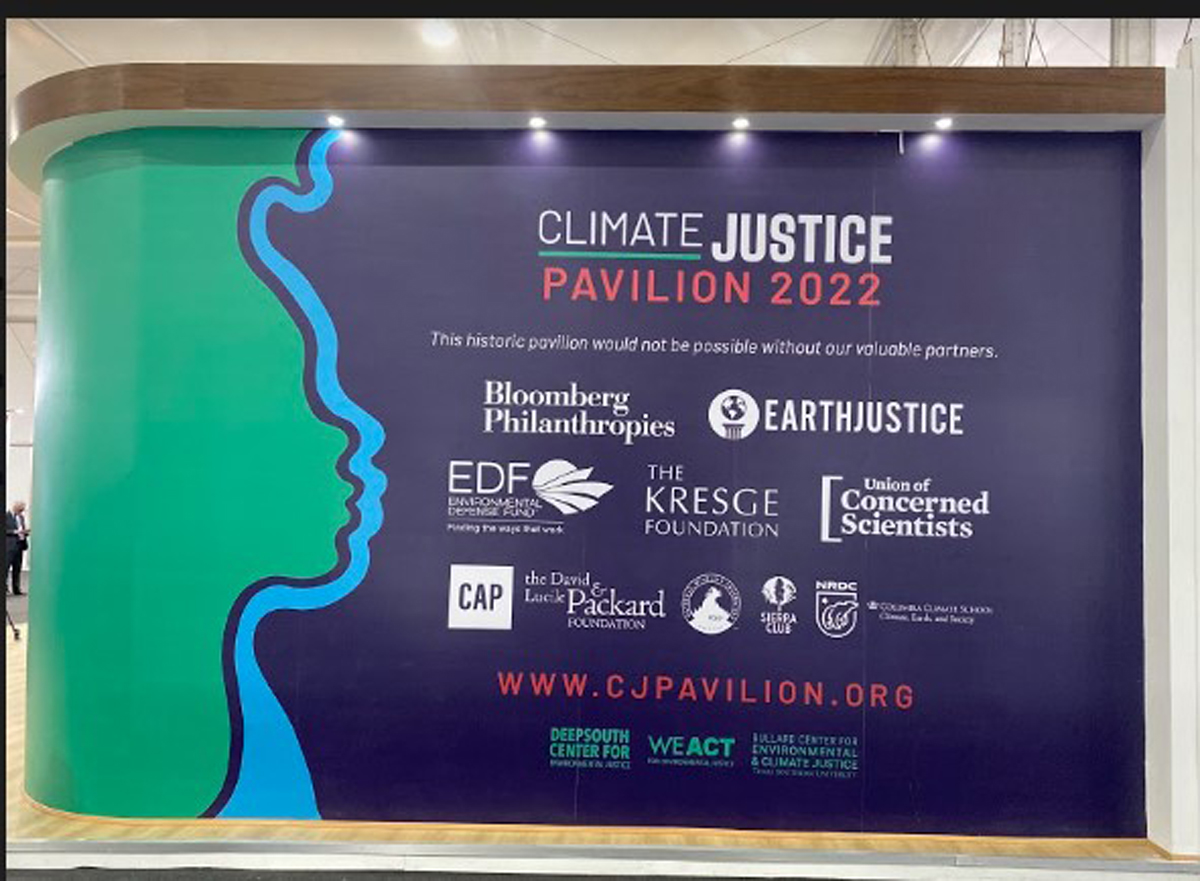Activists worldwide are thrilled about the first-ever Climate Justice Pavilion at the 27th annual United Nations Conference of Parties (COP27). The Deep South Center for Environmental Justice, WE ACT for Environmental Justice, and the Bullard Center for Environmental and Climate Justice at Texas Southern University debuted the pavilion this week at the start of the conference in Sharm El-Sheikh, Egypt.
“This pavilion is important because it’s a legitimate COP-sanctioned pavilion – it’s a great gathering space for the Global North and Global South environmental justice communities to come together,” said Leslie Fields, the Sierra Club’s National Director of Policy Advocacy and Legal, who will be attending COP27 as a member of the Sierra Club delegation.
“Women, children of color and the communities where they live are too often an afterthought when talking about climate justice. The first-ever Climate Justice pavilion will provide a global stage to highlight their stories and others, encouraging governments to develop policies and clean energy transition plans that are inclusive, equitable, and reflect research on the effects on our communities.” said Dr. Beverly Wright, executive director of The Deep South Center for Environmental Justice. “This pavilion will challenge the world’s best and brightest to reimagine how to tackle climate change and protect the most vulnerable all around the world.”
The Sierra Club joined several other environmental organizations in sponsoring the pavilion. Fields is happy that the Sierra Club, an organization long concerned with environmental justice, is able to support the pavilion. “It’s important to be an ally,” she noted, adding that a number of Sierra Club staff, volunteers, and members of the board of directors will be attending COP27.
Fields is looking forward to working with people from a variety of backgrounds at the conference. “I think this pavilion shows the urgency of the environmental justice and climate justice movements converging,” she said. “It’s important to have this sanctioned space to inform and influence the issues and negotiations at the conference for the countries who have the least to do with climate destruction but are feeling it the most.”
The Climate Justice Pavilion will help to bridge that gap by serving as a space for productive conversations in the Blue Zone, which is where the majority of diplomats, policymakers, business, and professional advocates convene at COP27.
Grassroots groups and activists have provided such programming in past COP gatherings, but were only able to do so in the Green Zone, which is far from the Blue Zone. Because of this segregation, a collaboration was developed to build a Climate Justice Pavilion where many topics can be discussed, including:
- Climate migration;
- The risk of carbon capture and storage technology;
- Climate finance;
- Loss and damage to underserved communities due to years of colonialism and environmental racism;
- The need for energy justice;
- and climate reparations.
“This will definitely be a COP to remember,” said Fields. “We need to get real commitments on loss and damage. This is simple moral fairness. Climate change is hitting environmental justice and frontline communities first and worst – it exacerbates existing problems.”
